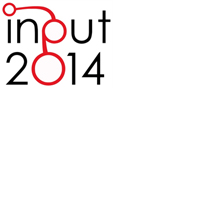Resilience Through Ecological Network
Abstract
The paper explores the strategic role that urban biodiversity and ecosystem services management, natural infrastructure and adaptive governance approaches can play in making our economies and societies more resilient and in linking human societies and the natural environment. Resilience – a concept that entered the debate on urban governance – means the ability of urban systems, considered as linear-systems, to react to external disturbances by returning to some socio-ecological equilibrium steady-state by overcoming a crisis period (Gunderson & al. 2010, Newman & al. 2009). In this view, green infrastructures can assume a strategic role in restoring and enhancing the ecological and environmental livability in urban areas. Starting from the International and European context, the paper discusses innovative programs and interdisciplinary projects and practices (some cases in Turin Metropolitan Area) to demonstrate how green infrastructures can increase the adaptive capacity of urban systems in term of resilience. They can contribute to increase the ability of European cities to adapt to climate change and to reduce their ecological footprints, to enhance security and life quality.Downloads
References
Barthel, S., Parker, J., Ernstson, H. (2013), “Food and Green Space in Cities: A Resilience Lens on Gardens and Urban Environmental Movements”, Urban Studies, 1(18), 1-17.
Baskin, Y. (1997), The work of nature: how the diversity of life sustains us, Island Press, New York.
Berkes, F., Folke, C. (eds.) (1998), Linking Social and Ecological Systems: Management Practices and Social Mechanisms for Building Resilience, Cambridge University Press, Cambridge.
Brunetta, G., Baglione, V. (2013), “Resilience in the Transition Towns Movement. Towards a new Urban Governance”, inTema. Journal of Land Use, Mobility and Environment, 6(2), 251-264.
Brunetta, G., Moroni, S. (2012) Contractual Community in the Self-organizing City. Freedom, Creativity, Subsidiarity, Springer, Dordrecht.
CEC (2001), European Governance: A White Paper, COM (2001), 428, 25 July, CEC, Brussels.
CEC (2009), Commission recommendation on mobilising information and communications technologies to facilitate the transition to an energy-efficient, low-carbon economy, SEC (2009), 1315 - 1316, 09 October, CEC, Brussels.
Costanza, R, D’Arge, R, De Groot, R, Farber, S, Grasso, M, Hannon, B, Limburg, K, Naeem, S, O’Neill, R, Paruelo, J, (1997), “The value of the world’s ecosystem services and natural capital”, Nature. 387(6630), 253-260.
Davoudi, S. (2012), “Resilience: A Bridging Concept or a Dead End?”, Planning Theory & Practice, 13(2), 299-307.
Daily, G.C. (1997), Nature’s services: societal dependence on natural ecosystems, Island Press, New York.
European Parliament (2012), Resolution on Our Life Insurance, Our Natural Capital: an EU Biodiversity Strategy to 2020, (2011/2307(INI).
Folke, C. (2006), “Resilience: The emergence of a perspective for social-ecological systems analyses”, Global Environmental Change, 16(3), 253-267.
Gómez-Baggethun, E., De Groot, R, Lomas, P.L., Monte, C. (2010) “The history of ecosystem services in economic theory and practice: from early notions to markets and payment schemes”, Ecol Econ. 69(6), 1209-1218.
Kates, R.W., Clark, W.C., Corell, R., Hall, J.M., Jaeger, C.C., Lowe, I., McCarthy, J.J., Schellnhuber, H.J., Bolin, B., Dickson, N.M., Faucheux, S., Gallopín, G.C., Grübler, A., Huntley, B., Jäger, J., Jodha, N.S., Kasperson, R.E., Mabogunje, A., Matson, P., Mooney, H., Moore III, B., O’Riordan, T., Svedin, U., (2001) “Environment and developmement: sustainability science”, Science, 292, 641-642.
Joann, C., Nadkarni, N., Rhie C. (2012), Progress and Challenges in Urban Climate Adaptation Planning: Results of a Global Survey, MIT, Cambridge.
Newman, P., Beatley, T., Boyer, H., (2009) Resilient cities. Responding to peak oil and climate change, Island Press, Washington.
Pickett, S.T.A, Cadenasso, M.L., Grove, J.M. (2004), “Resilient cities: meaning, models, and metaphor for integrating the ecological, socio-economic, and planning realms”, Landscape and Urban Planning, 69, 369-384.
Porter, L., Davoudi, S. (2012), “The politics of resilience for planning: a Cautionary Note”, Planning Theory and Practice, 13(2), 329-333.
Portugali, J. (2000), Self-organization and the City, Springer-Verlag, Heidelberg, Berlin.
Power, A.G. (2010), “Ecosystem services and agriculture: tradeoffs and synergies”, Philos Trans R Soc Lond B, 365, 2959-2971.
Ribaudo, M, Greene, C, Hansen, L, Hellerstein, D. (2010), “Ecosystem services from agriculture: steps for expanding markets”, Ecol Econ, 69, 2085-2092.
Swift, M.J., Izac, A.M.N., van Noordwijk, M. (2004), “Biodiversity and ecosystem services in agricultural landscapes - are we asking the right questions?”, Agric Ecosyst Environ, 104, 113-134.
Turner II, B.L., Matson, P.A., McCarthy, J.J., Corell, R.W., Christensen,L., Eckley, N., Hovelsrud-Broda, G.K., Kasperson, J.X., Kasperson, R.E., Luers, A., Martello, M.L., Mathiesen, S., Naylor, R., Polsky, C., Pulsipher, A., Schiller, A., Selin, H., Tyler, N. (2003), “Illustrating the coupled human-environment system for vulnerability analysis: three case studies”, Proceedings of the U.S. National Academy of Sciences, 100(14), 8080–8085.
URBES (2013), Urban Biodiversity and Ecosystem Services, http://urbesproject.org/index.html.
UN – DESA Population Division, World Urbanization Prospects (2011) The 2011 Revision, UN, New York, www.unpopulation.org.
UNEP, COP 10 Decision X/2 (2010), Strategic Plan for Biodiversity 2011-2020.
Zhang, W., Ricketts, T.H., Kremen, C., Carney, K., Swinton, S.M. (2007) ”Ecosystem services and disservices to agriculture”, Ecol Econ, 64, 253-260.

Copyright (c) 2014 Tema. Journal of Land Use, Mobility and Environment

This work is licensed under a Creative Commons Attribution 4.0 International License.
Authors who publish in this journal agree to the following:
1. Authors retain the rights to their work and give in to the journal the right of first publication of the work simultaneously licensed under a Creative Commons License - Attribution that allows others to share the work indicating the authorship and the initial publication in this journal.
2. Authors can adhere to other agreements of non-exclusive license for the distribution of the published version of the work (ex. To deposit it in an institutional repository or to publish it in a monography), provided to indicate that the document was first published in this journal.
3. Authors can distribute their work online (ex. In institutional repositories or in their website) prior to and during the submission process, as it can lead to productive exchanges and it can increase the quotations of the published work (See The Effect of Open Access)
